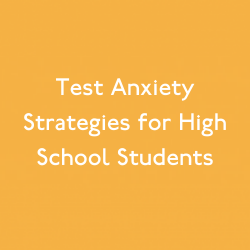October is National Bullying Prevention Month. Throughout the month, we’ll be posting information for administrators, teachers, students and parents regarding bullying prevention and intervention.
One out of every five children reports being bullied at some point in their lives. Bullying can lead to feelings of shame, anxiety and depression. Many students become fearful to go to school and have a difficult time focusing while there. Students who are victims of bullying aren’t the only ones to suffer negative effects. Students who bully are also at an increased risk for poor mental health and future incidents of violence and aggression.
In order for students to achieve success, they must enter a school environment where they feel safe, supported and accepted. Bullying destroys this kind of environment. School based bullying prevention programs have the power to decrease bullying by 25%. Follow these six steps to implement a bullying prevention program in your school:
How to Implement a Bullying Prevention Program
Assess the problem
Doctors don’t begin treatment before evaluating their patients. Teachers don’t begin instruction until they assess their students’ knowledge. The same concept holds true for a bullying prevention program. Assess the problem by surveying teachers, students and parents to gain an understanding of the nature of the bullying and potential contributing factors. For example, is bullying happening more often at a specific time of day? In a particular location of the school? Online or through social media applications? By developing an understanding of bullying incidents that may be happening at your school, you’ve taken the first step towards creating a plan that can better address any potential problems.
Create a clear policy
Develop a school wide policy that clearly outlines the expectations for preventing and responding to bullying. When developing the policy, include all stakeholders: teachers, support staff, parents, and students. The policy should provide a clear outline of expectations explaining how bullying incidents will be handled moving forward. Once the policy is created, hold yourself and your staff accountable for sticking to it!
Educate your staff
Educate any adults working with your students to ensure they understand the harmful effects of bullying, the data surrounding this problem, and most importantly, the current state of bullying within your own school. Share the survey data you collected with your staff. Finally, present your school wide policy so everyone knows what is expected of them and why it’s important.
Prioritize social emotional learning
Social emotional learning programs help students develop emotional management strategies so they can respond appropriately to challenging situations. They also cultivate empathy, help students strengthen communication skills and teach students strategies for resolving conflicts. The skills children develop through social emotional learning programs help prevent bullying and give students strategies for responding to and intervening when appropriate.
Enforce positive behavior management systems
Overall, positive reinforcement is more effective than punishment when it comes to behavior management. students who engage in bullying and students who are bullied are at higher risk for depression and poor mental health. There are many underlying reasons why a student might engage in bullying.These include: feelings of inadequacy, exposure to violence, or poor adult role models. Punishment can prevent students from talking about challenging experiences and expressing their feelings – consider using restorative practices rather than suspensions or detentions.
Communicate with parents
Maintain open lines of communication with parents. Start by sharing the school data that you shared with your staff and send the school policy home. Take the opportunity to walk through the policy in greater detail during back to school nights and parent teacher conferences. Teach parents warning signs that correspond with bullying and provide them with strategies for how to respond. A bullying prevention program requires a commitment from school staff, students and parents in order to be a success.
Learn more about the positive impacts a social emotional learning programs has on staff, students, and school culture. Contact Move This World for a free consultation.
Sign up for Move This World’s newsletter to stay up to date on social emotional learning.
Enter your email below!










